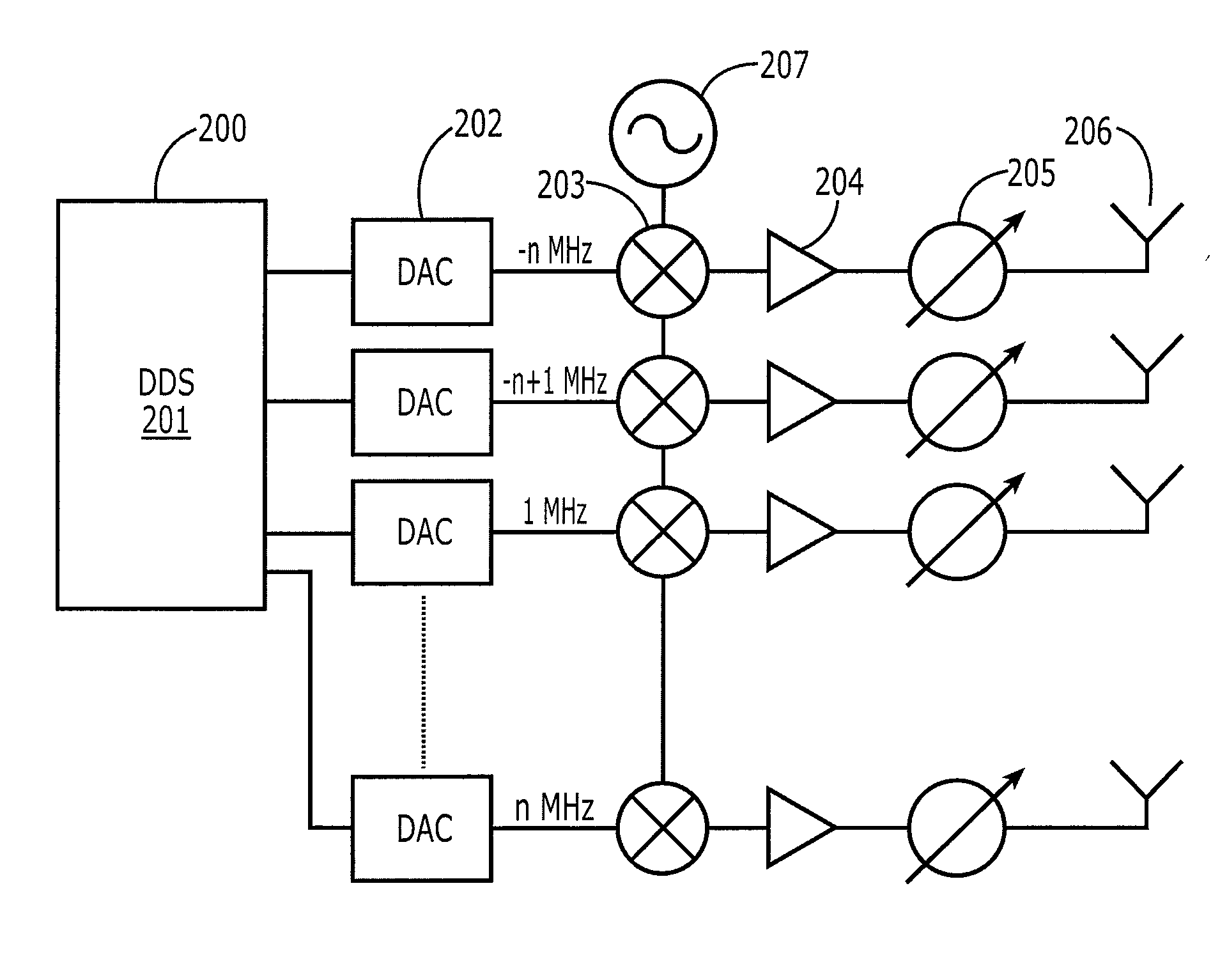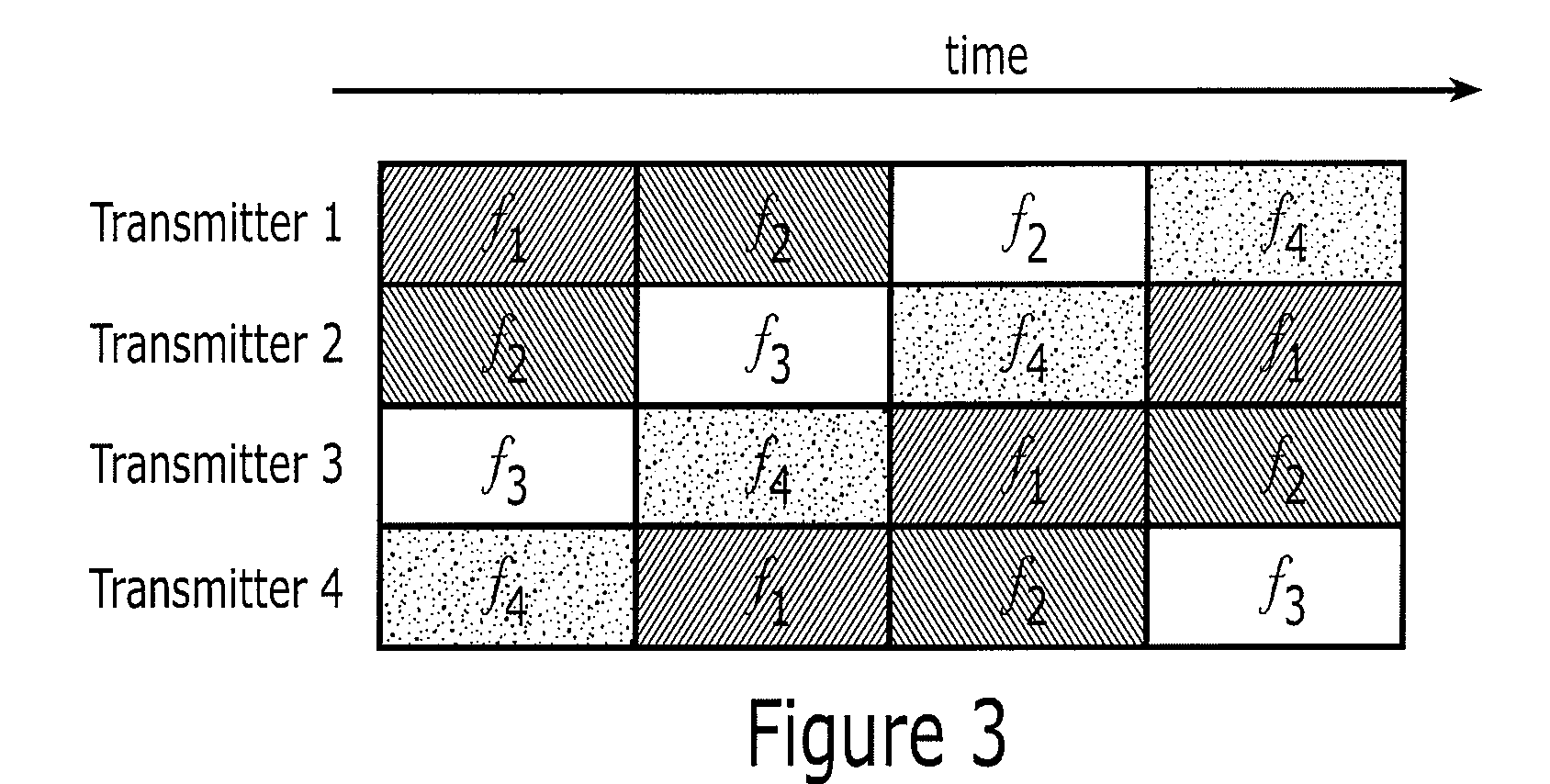Fully Saturated Multi-Tone Transceiver
a transceiver and fully saturated technology, applied in the field of wireless communications, can solve the problems of linear amplification using less efficient amplifiers, significant increases in throughput and range at a similar bandwidth and power expenditure, and consuming more power
- Summary
- Abstract
- Description
- Claims
- Application Information
AI Technical Summary
Benefits of technology
Problems solved by technology
Method used
Image
Examples
Embodiment Construction
[0013] The present invention provides a method and system for transmitting a multi-frequency signal composed of discrete tones of constant envelope parts that are amplified by a bank of fully saturated transmitters operating in their most power efficient mode. After amplification and transmission, the signals are multiplexed in the air as opposed to multiplexing before amplification, which allows for more efficient amplification as well. This concept is related to U.S. Pat. No. 7,151,476, hereby incorporated by reference. Therefore, the present invention provides a wireless transmitter that operates at high efficiency while transmitting a multi-tone signal.
[0014] As digital processing technology advances, the present invention will be more and more advantageous since both processing speed and power efficiency can still be improved, but are currently being held back by hardware technology. Furthermore, power efficiency of linear amplification, as is used in prior art MIMO techniques...
PUM
 Login to View More
Login to View More Abstract
Description
Claims
Application Information
 Login to View More
Login to View More - R&D
- Intellectual Property
- Life Sciences
- Materials
- Tech Scout
- Unparalleled Data Quality
- Higher Quality Content
- 60% Fewer Hallucinations
Browse by: Latest US Patents, China's latest patents, Technical Efficacy Thesaurus, Application Domain, Technology Topic, Popular Technical Reports.
© 2025 PatSnap. All rights reserved.Legal|Privacy policy|Modern Slavery Act Transparency Statement|Sitemap|About US| Contact US: help@patsnap.com



